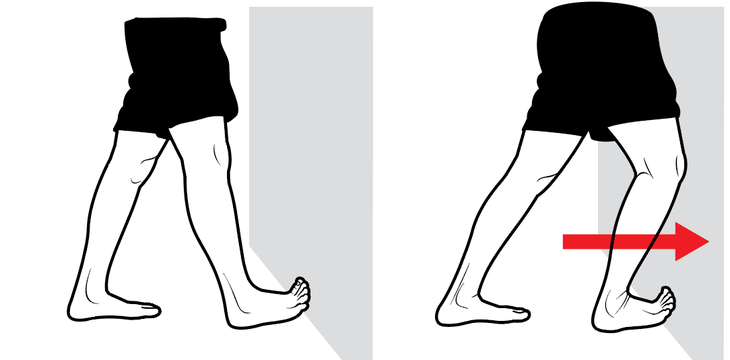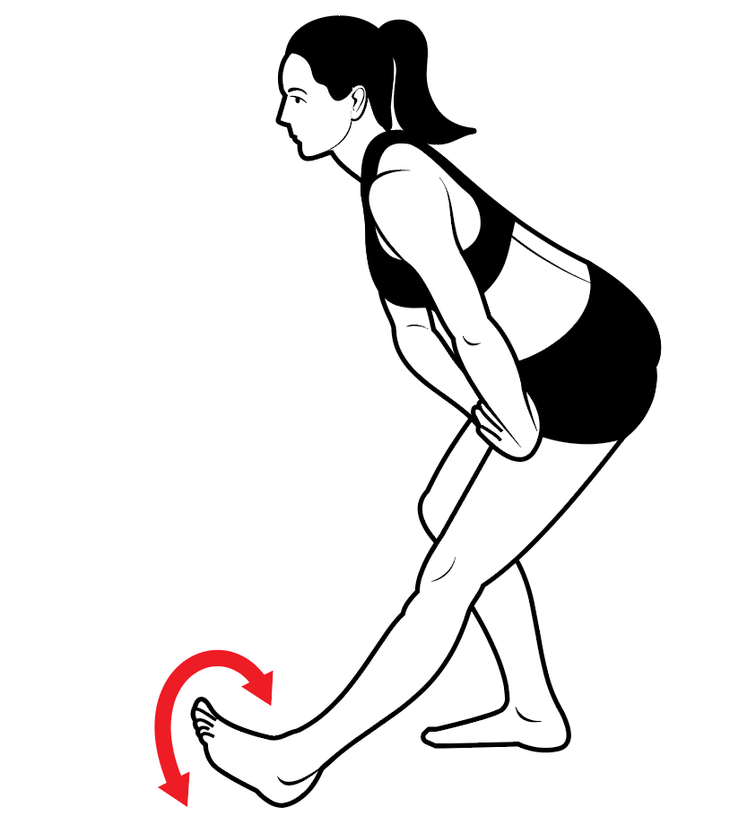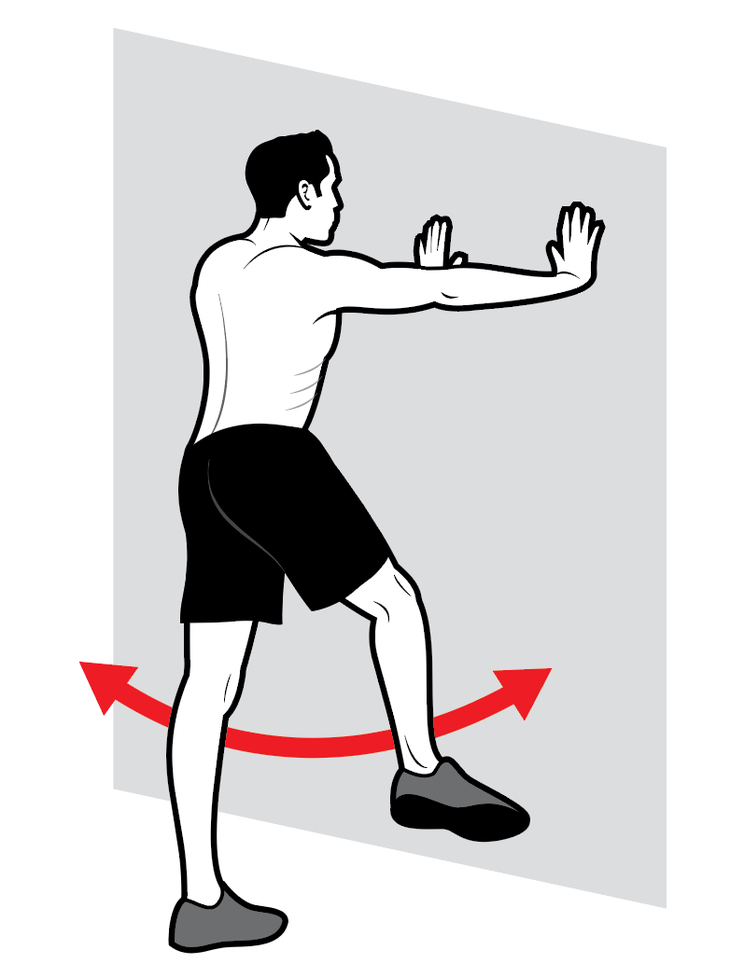Products You May Like

Key Parts
Your glutes are huge. Engage them on climbs to prevent fatigue.
Quads generate uphill power and help keep the knee tracking properly.
Hamstrings work hard to control descents.
The calves flex the foot and help you toe off.
A host of muscles and ligaments stabilize the ankle, allowing it to adjust to the terrain.
The Expert: Pete McCall
McCall is a master trainer and author of Smarter Workouts: The Science of Exercise Made Simple.
The Strategy
Backpacking is all about endurance. “The legs are always working, even when you’re standing still,” McCall says. But hills happen, and climbing with a weighted pack, especially over tough terrain, requires bursts of power, too. Train to meet the challenge: low to moderate intensity, with a focus on high repetitions, to help the muscles become more efficient for long days on the trail.
Stretching and Mobility Exercises for Leg Fitness
Knee-to-Wall Stretch

Do this simple movement before and after your hike to ward off foot pain and keep calf muscles from locking up.
With bare feet, face a wall (if on the trail, a tree or boulder with a flat face will do). Keeping your heel on the ground, rest the bottom of your big toe against the wall (or tree) and bring the knee of the same leg forward until you feel the stretch in the arch of your foot. Once you’ve gone as far as is comfortable, hold the stretch for 30 to 60 seconds. Switch legs and repeat on the opposite side.
Standing Hamstring Stretch

This variation on the standard hamstring stretch targets the inner and outer hamstring, both of which work hard when you hike over uneven surfaces.
Bend your right leg in a quarter squat (back straight, weight centered over the heel) and bring your left foot forward 6 to 12 inches. Keeping your left leg straight, rest your heel on the ground and continually rotate the left foot inward and outward for 30 seconds. You’ll feel the stretch behind your left thigh. Repeat with your right leg.
Hip Swings

This dynamic stretch targets the calves while warming up the entire lower body.
Stand a few feet from the base of a wall (or tree) and lean forward to rest your palms against the wall at shoulder height. Plant your left foot, keeping your knee straight, and lift your right foot off the ground, bending that knee. Swing your right knee outward toward the 3 o’clock position, then inward toward 9 o’clock. Continue swinging and rotating for 30 seconds before switching to the other leg.
Common Leg Injuries
Ankle Sprain
The Problem Worst case: You hear the popping sound of your ligaments tearing completely, and you can’t put weight on your ankle. More commonly, the ligaments are stretched, which still hurts, but heal on their own in days.
The Fix If you roll an ankle, remove your boot unless you suspect a fracture. If there’s little swelling and you’re able to bear weight with minimal pain, follow this plan: a night of rest, icing (or a 20-minute dunk in a cold stream every two hours), compression with something like an ACE bandage, and some gentle mobility exercises, like ankle circles. If there’s swelling and you’re having difficulty bearing weight, splint the ankle and hobble out.
Plantar Fasciitis
The Problem Hiking with plantar fasciitis feels like hammering a nail into the front of your heel. It’s a repetitive-stress injury that occurs when the thick band of fascial tissue that connects heel and toes becomes inflamed.
The Fix Prevention is best. Gradually tackle more difficult trails and heavier pack weights—give yourself at least six to eight weeks to ramp up. If plantar fasciitis strikes while you’re on a trip, aim to not make things worse. Lean into your hiking poles, take breaks as needed, ice if you can, and roll a tennis ball under your foot to stretch out the fascia. Once you’re home, get assessed by a physician: There might be an underlying strength, mobility, or stability issue, which can originate in other areas of the body.
Knee Pain
The Problem Uphills cause aches, but downhills cause injuries—that’s due to the added force of gravity. Descending puts a lot of strain on your patellofemoral joint, the connection between the bulb of your femur and your kneecap, and exacerbates problems like damaged or destroyed cartilage or arthritis. Worse: You may not even realize you’ve hurt yourself until after a long day of hiking.
The Fix If the downhills are murder on your knees, pop an ibuprofen and make sure you keep your knees bent to let your hamstrings absorb the impact. On trails without graded switchbacks, zigzag down to reduce the strain on your knees. Note: See a doctor for persistent knee pain, especially if it’s accompanied by swelling.
Pro Tip: Recover Faster
To reduce soreness, slip on a pair of knee-high compression socks, or upgrade your baselayer to compression tights and wear them to bed, McCall advises. “You’re getting pressure on the muscles, helping the deoxygenated blood return to the heart and get more oxygenated blood back in your body, promoting recovery.” Compression is also one of the best ways to combat garden-variety swelling.
